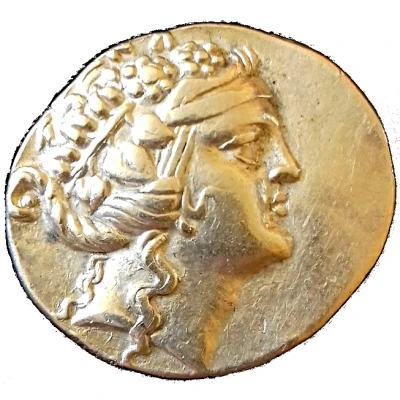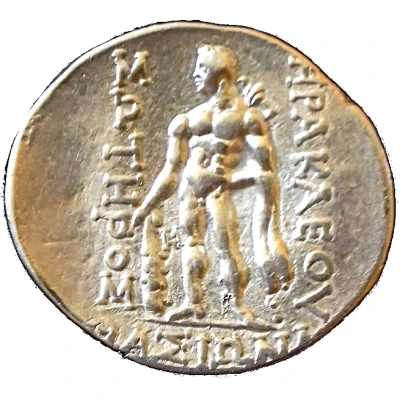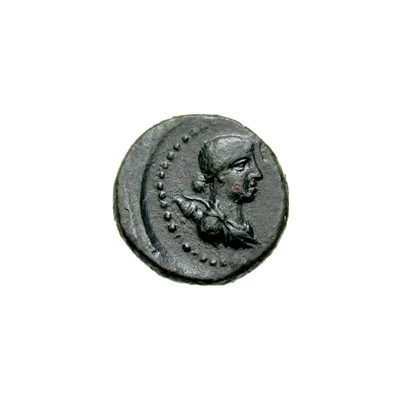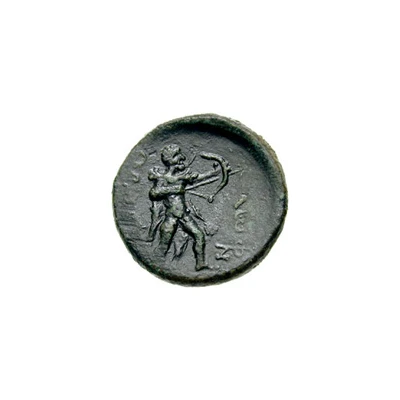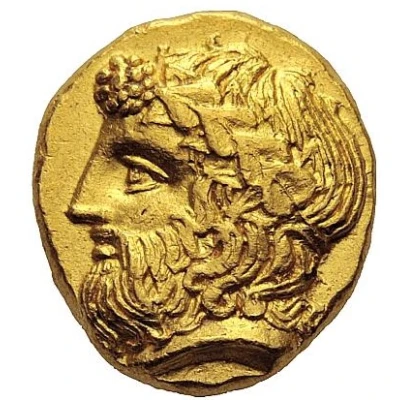
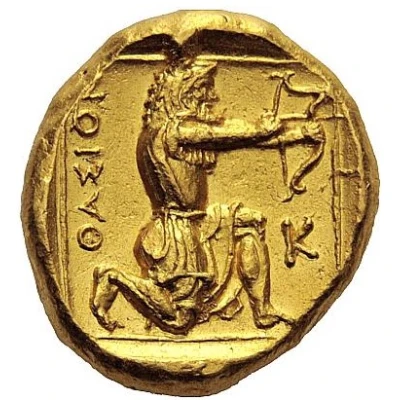

© Nomos AG
Hemistater 380 BC
380 BC year| Gold | 3.95 g | - |
| Issuer | Thasos (Thracian Islands) |
|---|---|
| Type | Standard circulation coin |
| Year | 380 BC |
| Value | Gold Hemistater (10) |
| Currency | Drachm |
| Composition | Gold |
| Weight | 3.95 g |
| Shape | Round (irregular) |
| Technique | Hammered, Incuse |
| Demonetized | Yes |
| Updated | 2024-10-10 |
| Numista | N#185031 |
|---|---|
| Rarity index | 100% |
Reverse
Herakles, wearing lion-skin headdress and short, hunting chiton, kneeling right, shooting his bow. To right, Κ and all in linear frame within an incuse square
Script: Greek
Lettering:
ΘΑΣΙΟΝ
Κ
Comment
Prospero 245; West pl. 4, 30 var. (same obverse die).
Interesting fact
The Hemistater coin from Thasos (Thracian Islands) was used as a form of currency in ancient Greece and its design has been well-preserved over time. The coin features an image of a Satyr, a mythical creature with human-like features and goat-like horns, on one side, and an inscription of the name of the city, Thasos, on the other. This coin is significant not only for its historical value but also for its artistic and cultural importance, showcasing the advanced craftsmanship and attention to detail of ancient Greek coin makers.
Price
| Date | Mintage | VG | F | VF | XF | AU | UNC |
|---|---|---|---|---|---|---|---|
| ND (-380) | - | - | - | - | - | - |
Values in the table are based on evaluations by sales realized on Internet platforms. They serve as an indication only for Hemistater (380 BC) coin.
